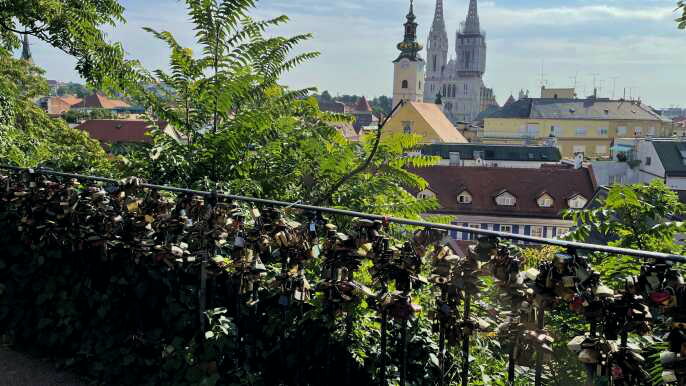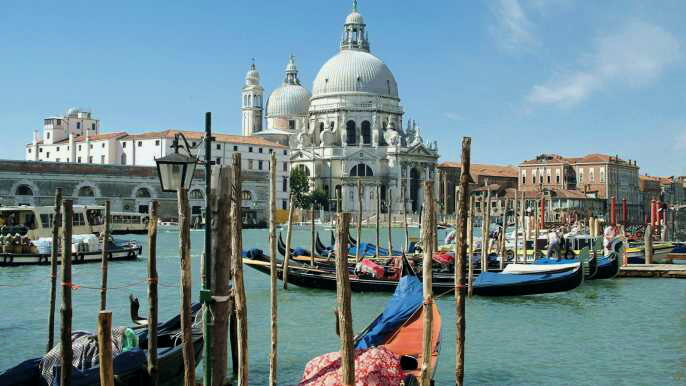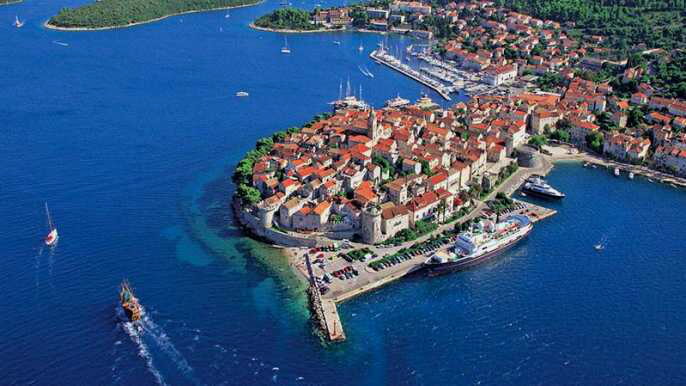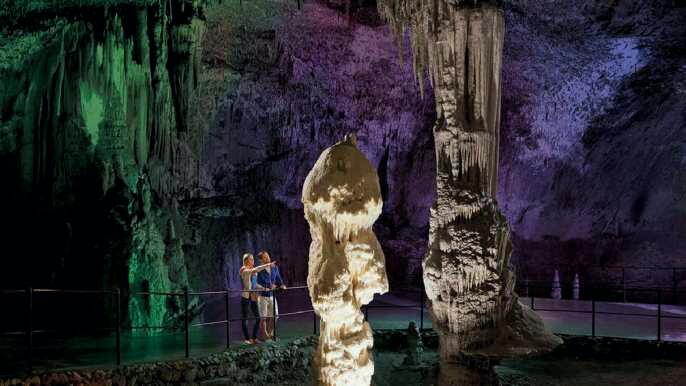If you’re planning a trip to Croatia, Trogir is a must-visit. Its enchanting old town is packed with Romanesque-Gothic buildings and architectural gems, making it a UNESCO World Heritage Site.
Walk around and explore the cobblestone streets of the old town, lingering in the lively squares and looking at the beautiful stone architecture. Admire the City Gate and old city walls, as well as all the little shops and restaurants lined up in their narrow streets.
St. Lawrence’s Bell Tower
One of the reasons Trogir has earned its UNESCO World Heritage status is the impressive Romanesque-Gothic Cathedral. This 13th-century building incorporates a variety of architectural styles with various details added throughout its centuries of existence.
The Gothic-Renaissance bell tower, which is 47m high, stands at the top of the cathedral and offers breathtaking panoramic views over the town. However, climbing to the top of this tower is a bit challenging and not for everyone as it can be quite narrow and dark.
Another highlight of a visit to Trogir is strolling around its stone-covered squares and courtyards. These small, intimate spaces are filled with architectural beauties and quirky shops that add to the charm of this ancient town.
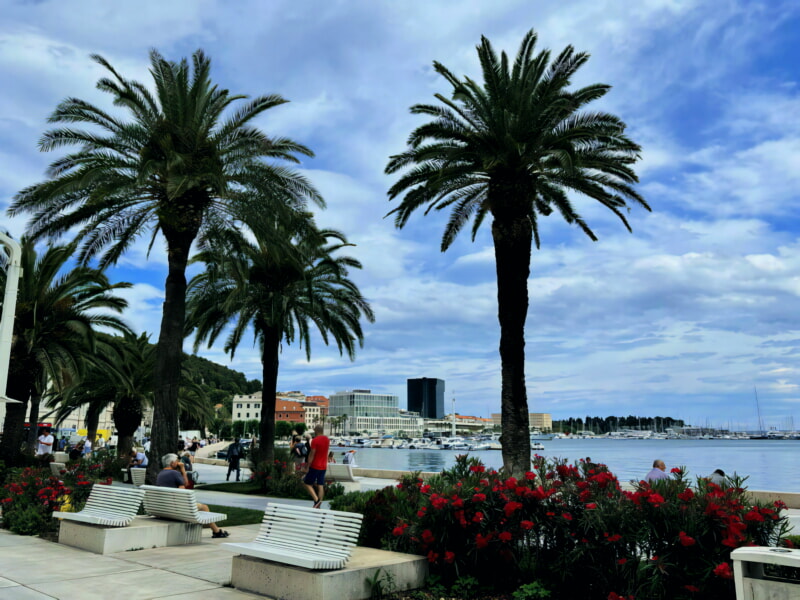
St. Sebastijan Church
Trogir is a stunning historic town that stretches across a tiny island linked to the mainland by two smaller bridges. It’s a perfect getaway from the busy city of Split, with its beautiful architecture and award-winning accolades as one of the best island cities in Europe (National Geographic, 2015).
For a quick introduction to Trogir’s Old Town, head to the lively and atmospheric central square (Croatian: Trg Ivana Pavla II). Surrounded by some of the town’s most notable buildings, it’s a lovely space to sit and people watch while enjoying a drink.
Right next door to John Paul II Square is the charming stone-covered piazza called Gradska Ulica. It’s a delightful spot to stop for a bite to eat and some relaxing time after sightseeing in the old town.
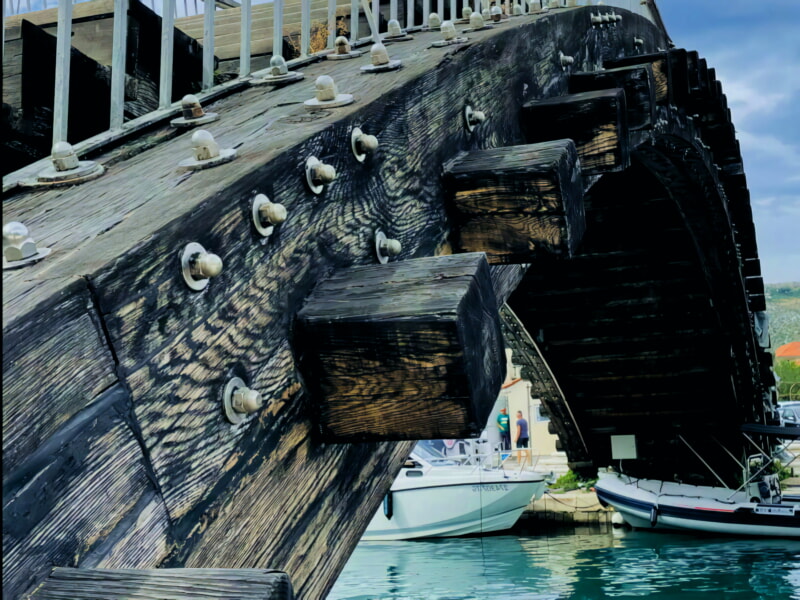
Kamerlengo Fortress
Kamerlengo Fortress is a Venetian castle from the 15th century which offers a stunning view of the city and harbor. Climb the fortress’s walls to get a vantage point you won’t find anywhere else in town!
Another one of the best things to do in Trogir is to walk along its beautiful waterfront promenade. You’ll enjoy views across the water to the other side, palm trees and a few cafes with outdoor seating.
This UNESCO World Heritage Site is home to the striking Land Gate, which was originally a key part of the walled city’s defences. Inside you’ll find a series of interesting elements like the Lion of St. Mark (a symbol of Venice) and a sculpture of Saint John of Trogir, who is the patron saint of Croatia.
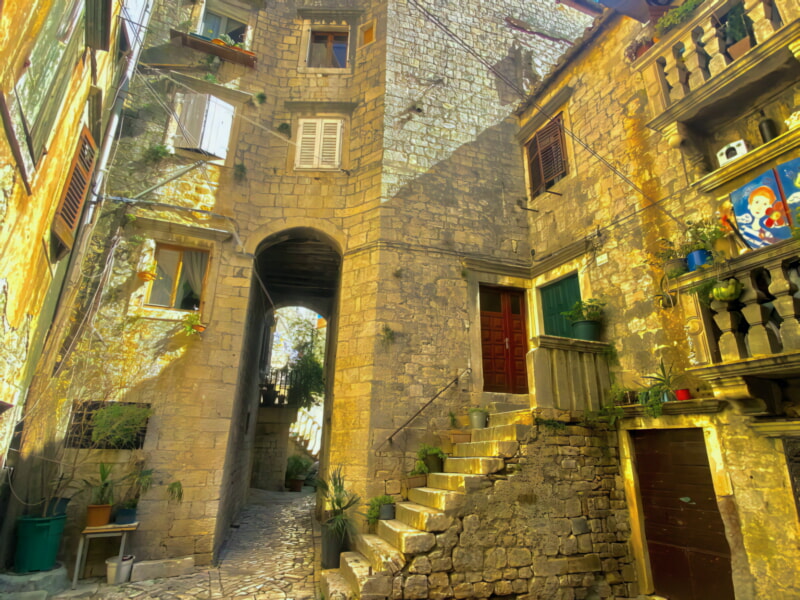
St. Dominic’s Monastery
Trogir is a stunning Croatian town that boasts centuries of history and beautiful architecture. Its tiny, deceptively quaint Old Town looks like it could be lifted straight out of a medieval fantasy novel.
One of the best things to do in Trogir is stroll the streets and take in all the architectural beauty and enchanting nooks and crannies of this UNESCO-listed world heritage site. Whether you are looking for hidden courtyards and quaint squares, quirky shops or traditional konobas, there is something for everyone here.
If you want to take a break from exploring the historic Old Town, head over to the picturesque John Paul II Square. The piazza is filled with cafes and restaurants to enjoy while you soak up the atmosphere.
Trogir Civic Museum
Trogir is a gorgeous historic town with plenty to see and do. Its UNESCO World Heritage status has made it a top destination for tourists, with the best time to visit being in late spring or early autumn when the crowds are manageable and temperatures are pleasantly warm.
The Civic Museum is a great place to learn about the history of this quaint city from prehistoric times through to modern day. Housed in the former Garagnin-Fonfogna Palace, this museum showcases a variety of historical collections.
Despite its small size, the museum has a permanent exhibition which focuses on the city’s history through artefacts and documents. It also has a collection of ceramics, coins and numismatics.
